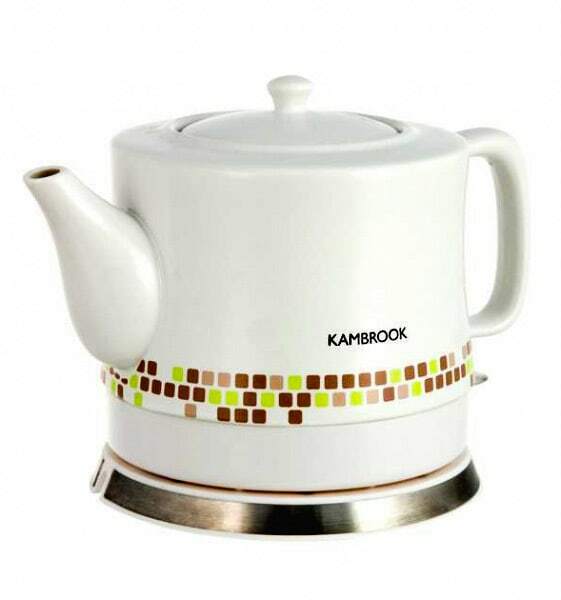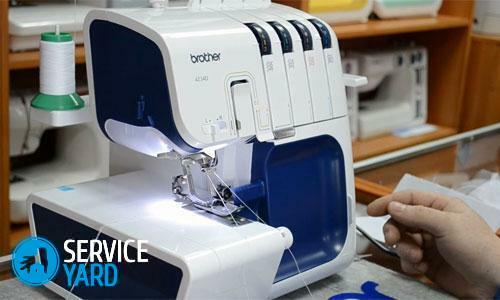 Linen louse (aka cootie) - a subspecies of human parasites. A separate subspecies of the parasite has become, because now 72 thousand years this insect coexists with the man selyas on his clothes, but not on the scalp. Wardrobes parasites exacting to their environment, and dependent on the way of life of the host, but because knowing these features may quickly enough to get rid of these parasites without the use of special tools.
Linen louse (aka cootie) - a subspecies of human parasites. A separate subspecies of the parasite has become, because now 72 thousand years this insect coexists with the man selyas on his clothes, but not on the scalp. Wardrobes parasites exacting to their environment, and dependent on the way of life of the host, but because knowing these features may quickly enough to get rid of these parasites without the use of special tools.
Content
- It looks like linen lice
- Nutrition and the environment insect habitat
- Unlike other parasites underwear
- Borne diseases linen lice
- breeding cycle
- The spread of parasites
- Methods of dealing with clothesline lice
- Funds from malicious insects
It looks like linen lice
 Hanging parasite superficially similar to the head is small (2-3 mm) insect without wings, with a belly that is elongated in length. under the microscope on the edges of the abdomen becomes a fold forming a kind of edges. It is formed when emptying the abdomen lice from food.
Hanging parasite superficially similar to the head is small (2-3 mm) insect without wings, with a belly that is elongated in length. under the microscope on the edges of the abdomen becomes a fold forming a kind of edges. It is formed when emptying the abdomen lice from food.
externally underwear individual lighter (Almost white) than its parent relative. After blood filling body lice becomes red-brown.
Lice larvae superficially similar to adult individuals, only much smaller.
Nits have linen head and insects are very similar, the only difference is that the wardrobes lay them in the seams, folds and other hard-to-person field. See them without a magnifying glass is almost impossible: they are very bright and have a length of about 0.5 millimeters.
On clothes insects are arranged in groups, and on the body - one by one.
Nutrition and the environment insect habitat
LINEN these insects are called because they dwell in the underwear where easier access to the human body and, consequently, to the food.
Simultaneous infection with human and linen, and head parasites are extremely rare. Co-existing on the body insects do not interbreed between themselves. Under laboratory conditions, on the other hand, the sub-species by crossing are able to give a healthy offspring.
 Almost all the time insects are on the clothes, where they mate, lay eggs and are resting. Only for feeding they are sent to skin-human host. Their habitat (underwear) is not accidental, because the laundry is directly on the body, but because the lice make the short journey there is no difficulty.
Almost all the time insects are on the clothes, where they mate, lay eggs and are resting. Only for feeding they are sent to skin-human host. Their habitat (underwear) is not accidental, because the laundry is directly on the body, but because the lice make the short journey there is no difficulty.
Only food lice is human blood. To suck blood insects pierce the skin special outgrowths located in the mouth by injecting an enzyme into the wound, which reduces blood clotting. It is this enzyme, getting into the wound on the skin, cause allergic reactions and that it causes the appearance of bluish spots in the site of the bite.
Linen insects feel comfortable within a fairly wide temperature range - from zero to forty five degrees above zero, and the larvae (nymphs), this range is somewhat smaller - from plus five to forty plus degrees. The optimum temperature for breeding parasites 30-32 degrees. If the laundry is removed from the body for some time and it cools, physical activity slows down insects.
Well they feel in moist air if the humidity is low, then the temperature below minus five and plus forty degrees above for their destructive.
 The life span of an adult ranges from thirty-two to forty-six days. At low temperatures, the duration of insect life is increasing, and the size of the body are reduced.
The life span of an adult ranges from thirty-two to forty-six days. At low temperatures, the duration of insect life is increasing, and the size of the body are reduced.
They feed on the parasites are four to five times a day, drinking a time of about half a milligram of blood. The speed with which crawl adults ranges from fifteen to thirty centimeters per minute. Insect bites most often located on the buttocks, thighs and upper body hairless. The groin bites are extremely rare on the scalp lice do not infest.
The most common body lice live on the clothes of those who do not comply with hygiene and does not change the linen (in this case, favorable conditions are created for lice). Even sometimes wears underwearIt is not able to destroy the parasites, because they can live in the water up to two days. With regular change of linen, insects bite less, but still live in the clothes. That is, if a person wears clothes once in three days, the parasites survive on it.
On bedding linen parasites do not live, that is, the concept of "Bed louse" is erroneous. Bedding lice can called bed bugsThat bite man selyas in his bedclothes.
Unlike other parasites underwear
Lice simply distinguished from other parasitic insects:
-
 crablouse It has a different structure of the body (abdomen wide and short, similar to crab).
crablouse It has a different structure of the body (abdomen wide and short, similar to crab). - by bedbugs cootie different small size and color (dark bugs, lice and white). In addition, the bugs bite only at night, and then the lice when the person wearing contaminated clothing.
- Lice, unlike pincers, Lighter and gather groups (mites live alone). Further, lice are limbs 6, 8 and mites.
- Fleas darkerThan lice and are able to jump, as well as fleas often bite people on exposed skin, not under clothing.
- The head and body louse are very similar, the only difference is their habitat.
Borne diseases linen lice
Clothesline pediculosis characterized by multiple lesions in the body, more acute allergic manifestations, frequent occurrence of complications of type pyoderma and ulcers. This is due to the fact that linen parasites more frequently found in vagabonds, not watching their state and strongly trigger disease, infect scratches.
The bites of these insects give rise to severe itching, some accompanied by allergic reactions. children such bites can cause irritability and mood swings.
Linen parasites are more likely to carry pathogens of their relatives return and typhus fever Volyn.
breeding cycle
 Louse laundry belongs to the insect with incomplete metamorphosis, ie, its larvae are similar to adults and differ from them only immature reproductive system, dimensions. The larvae are called nymphs and also feed on human blood.
Louse laundry belongs to the insect with incomplete metamorphosis, ie, its larvae are similar to adults and differ from them only immature reproductive system, dimensions. The larvae are called nymphs and also feed on human blood.
Female lives about thirty five to forty-five days, the male is slightly smaller. During the life of the female It lays about 100-140 eggs (About four nits per day). Incubation period (assuming a constant finding about the human body) for about five days. If the clothing is removed, therefore, it cools, the development stops, and when heated recovers again. The incubation period for changing the temperature can last up to two months.
Once the larva emerges from the egg, she once fed, fades and becomes a nymph of the first age. It develops within five to six days before the next moult, then eight or ten days comes the third molting nymph becomes an adult insect.
Under optimal conditions, the entire cycle takes place within 16 days.
The spread of parasites
Linen parasites can be transmitted in several ways:
- During the physical contact (hugs and so on) through the clothes.
- In public places (transport, railway stations and so on).
- When sharing clothes (from the infected body lice on a clean underwear).
- Joint storage.
- It is extremely rare in the water (swimming pools, lakes, and so on).
That is, in order to prevent head lice infestation, avoid vagrants and other individuals who do not observe the rules of personal hygiene.
Methods of dealing with clothesline lice
 Linen lice are extremely sensitive to humidity and temperature conditions, especially during the breeding season. Thorough washing at high temperature and continuous ironing linen - the best prophylaxis and means for getting rid of pests at a primary infection.
Linen lice are extremely sensitive to humidity and temperature conditions, especially during the breeding season. Thorough washing at high temperature and continuous ironing linen - the best prophylaxis and means for getting rid of pests at a primary infection.
There are several methods that will get rid of the parasites in the home:
- insecticides (Sprays, concentrated liquids, powders) - a great tool for getting rid of household pests.
- Soak the linen and clothes in dusts. Douste - quite aggressive means, and therefore it should be used with caution.
- tar soap. Not only deters insects, but also effectively relieves itching bites.
- Boiling or washing in boiling water. Special means to display insects in this method is not necessary, it is sufficient only qualitative detergents.
- clothing Freeze For a three days. Washed clothes hang out in the cold for three days.
Funds from malicious insects
The emergence of malicious parasites unpleasant and even dangerous. To quickly get rid of the problem will help effective following drugs:
- «plus a couple"- gentle but effective spray that helps to get rid of parasites;
- «Nydala"- available as a spray. The main action: affects breathing parasites, so that they die;
- "Paranit». The drug, which has a mild effect in which to get rid of the parasites may have children or people with allergies.
It is important to remember that the struggle with body lice and treat the effects of their bites is always more complicated than initially avoid infection. Therefore, you should avoid places where lice can be transmitted without contact with strangers and untidy people not to sleep in shady places, use only their clothing and hygiene items, to teach children to practice good hygiene and sanitation.



